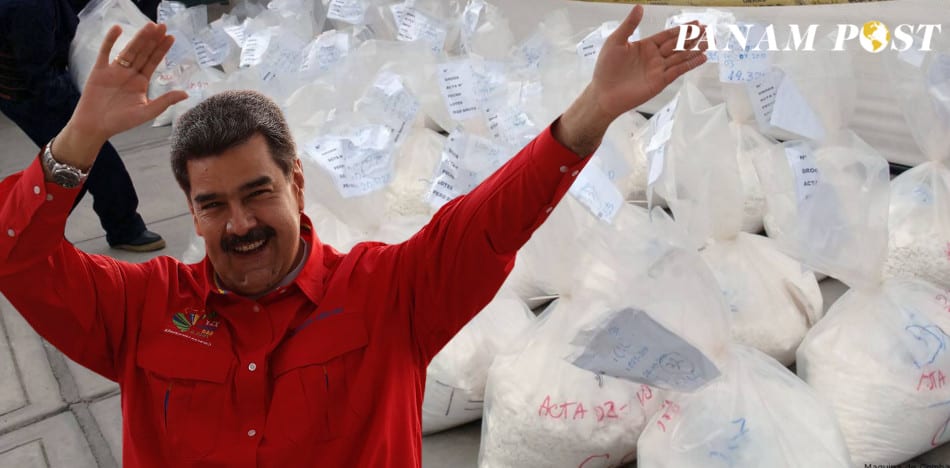
Spanish – Venezuela, known for having the world’s largest oil reserves, is now also known as a cocaine-producing country after opening the doors to the Colombian guerrillas of the FARC and ELN and establishing them in its territory.
Nicolas Maduro’s regime has transformed the South American country into an “emerging power in the production and illicit processing of drugs,” according to Spain’s ABC newspaper.
In 2017, Spain seized 2,500 kilograms of cocaine on a ship coming from the oil-producing country. That same year, in June, they found 780 kilograms of drugs in a state-owned PDVSA truck, and in 2018, Colombia burned an airplane loaded with cocaine from Venezuela. Over the years, there have been more cases in which Maduro’s dictatorship has played a leading role in drug trafficking.
Fotos / Incautaron 3,5 TON de cocaína y desmantelaron megalaboratorio de drogas en el Zulia https://t.co/6xKkcKutkW pic.twitter.com/JWuyjOdtmV
— EXTRA VENEZUELA (@ExtraVzla) September 23, 2019
According to ABC, Venezuela is not only a bridge for the illicit export of cocaine from Colombia, but now also cultivates, produces, and processes drugs in “small but significant quantities” because of the links between narco-guerrillas and the Soles Cartel:
Faced with a reduction in oil production and the loss of its income from foreign exchange, the Soles cartel has resorted to drug trafficking managed by the FARC and the ELN as its alternative source of income but at a blood-stained social cost that would compete with the Mexican and Central American cartels.
Venezuelan professor Javier Tarazona, director of the NGO FundaREDES, reported documented evidence of the presence of the FARC and ELN in at least 17 of Venezuela’s 23 states to the Colombian Attorney General’s Office.
“The worst thing is that FARC leaders like Ivan Marquez and Jesus Santrich, among others, operate from the Miraflores Palace, the seat of power in Caracas, which protects and finances them, and treats them as ministers with security escorts,” Tarazona said as he left the Colombian Attorney General’s office.
“Since 2002, the FARC became an alidade of those in power. On the one hand, they signed the peace agreement in Colombia, and on the other, they left for Venezuela. They left with families, properties; they bought farms in Zulia, Tachira, Apure, Bolivar, Amazonas. There are 17 states where the Colombian guerrilla is present in Venezuela,” the specialist said.
República Dominicana y Venezuela: Tráfico de cocaína por el Caribe https://t.co/yBB1vjolT0
— Daniel Pou (@pousuazo) September 20, 2019
The State Department’s 2019 annual report identified 17 out of 22 countries in the region as drug producers or transit points, with particular emphasis on Bolivia and Venezuela because they have not complied with international counternarcotics treaties.
“The Maduro government demonstrated a complete lack of willingness to make the more than [sic] necessary policy changes to enforce existing laws. This creates an extreme level of impunity exacerbated by a lack of transparency and high levels of corruption,” the report stated.
The other activities
The Colombian guerrillas in Venezuela not only produce and export cocaine, but they have also become the largest employers in the states of Tachira, Zulia, Apure, Barinas, Falcon, Aragua, and Sucre, where they have expropriated dozens of cattle farms.
Additionally, they have also acquired access to minerals such as gold, coltan, and diamonds, thanks to Maduro’s regime.
Chavez’s Order
Reports from the U.S. Drug Enforcement Administration (DEA) revealed that former Venezuelan President Hugo Chavez had ordered the “flooding” of the U.S. with cocaine from the FARC. They also point out that the former president was leader and coordinator of the Soles Cartel.
“The guerrilla was one of the first to develop cocaine trafficking through Venezuela to markets in the United States and Europe, while Venezuelan smuggled gasoline flowed in the opposite direction,” the report said.
 Versión Español
Versión Español












